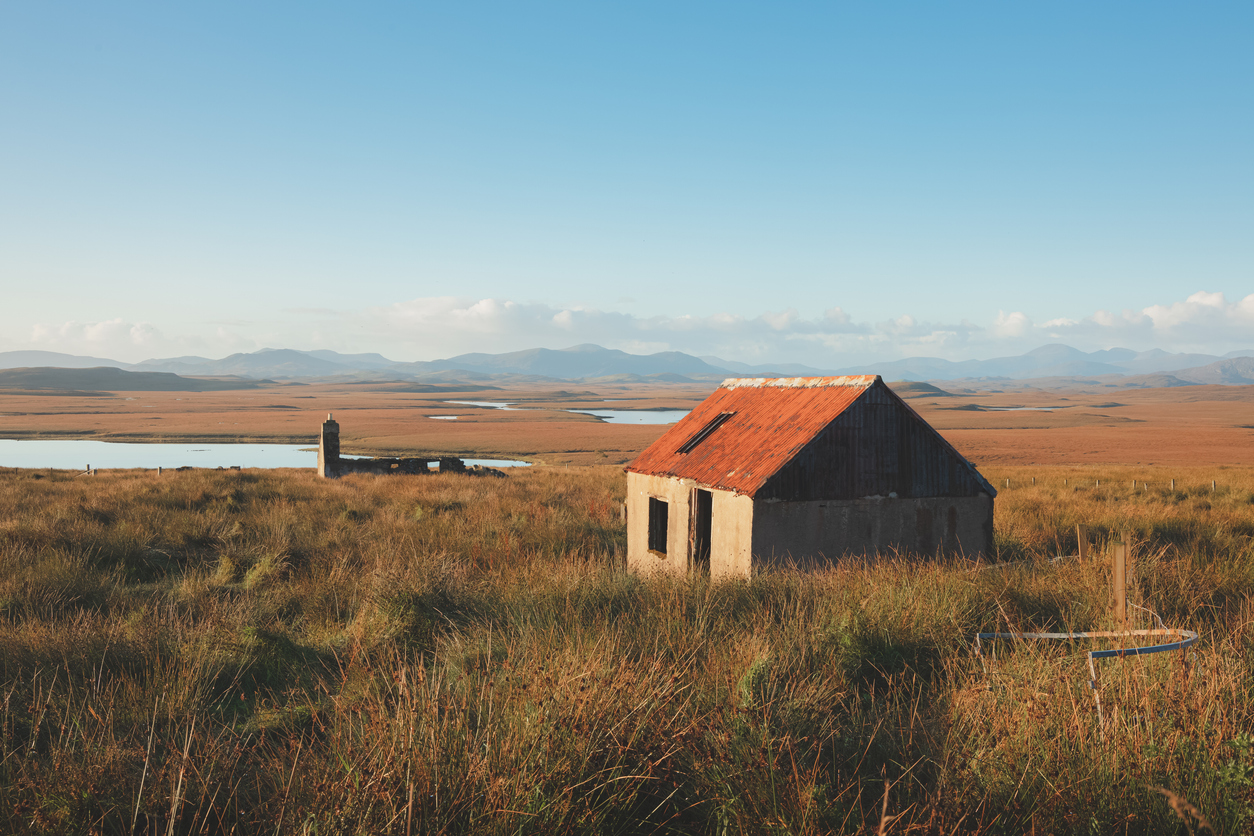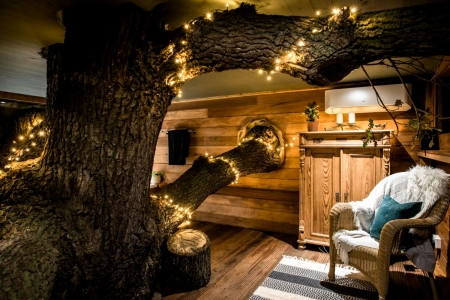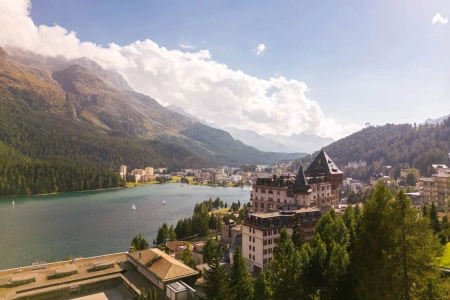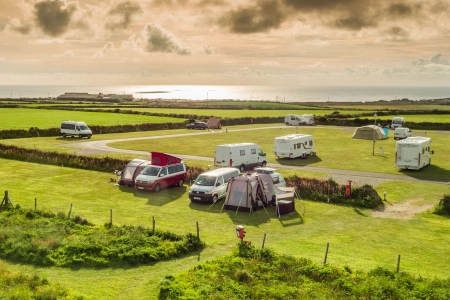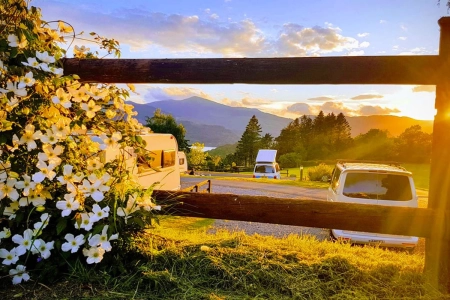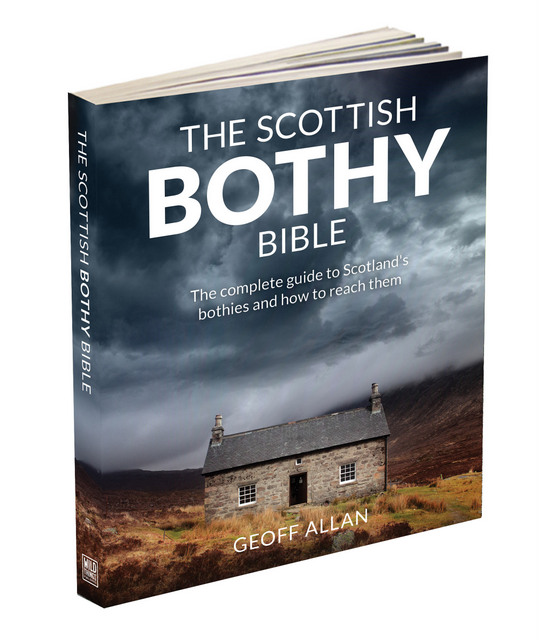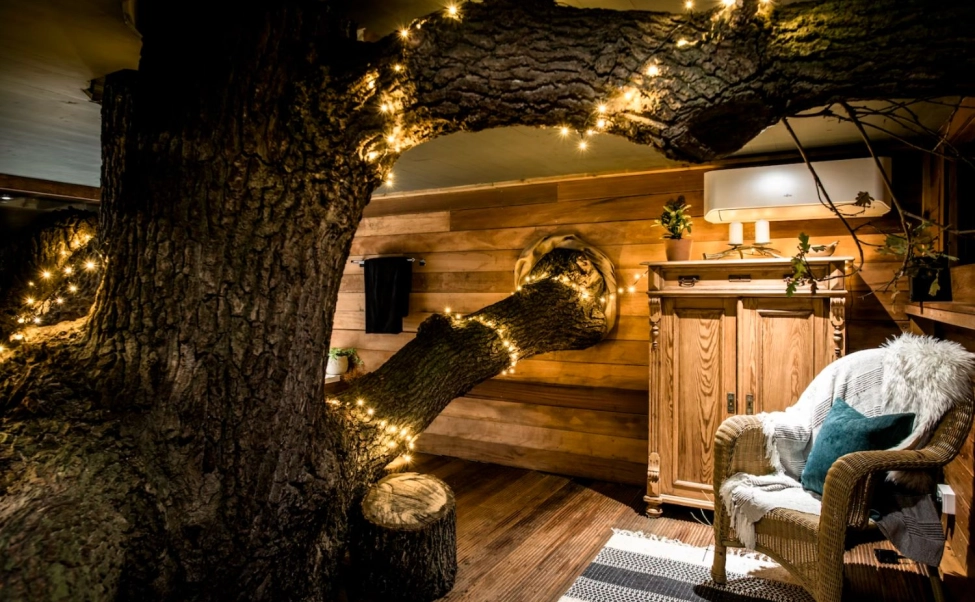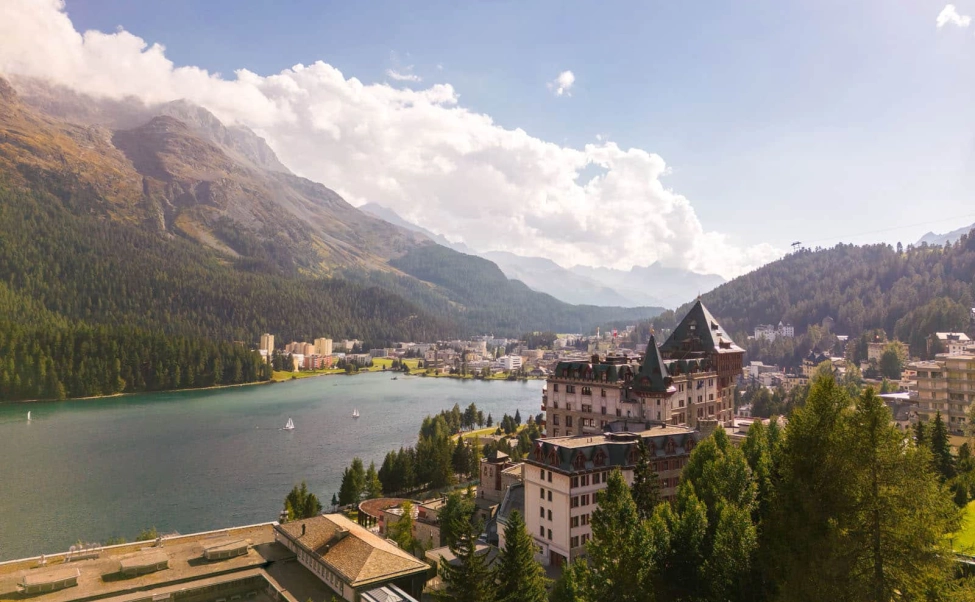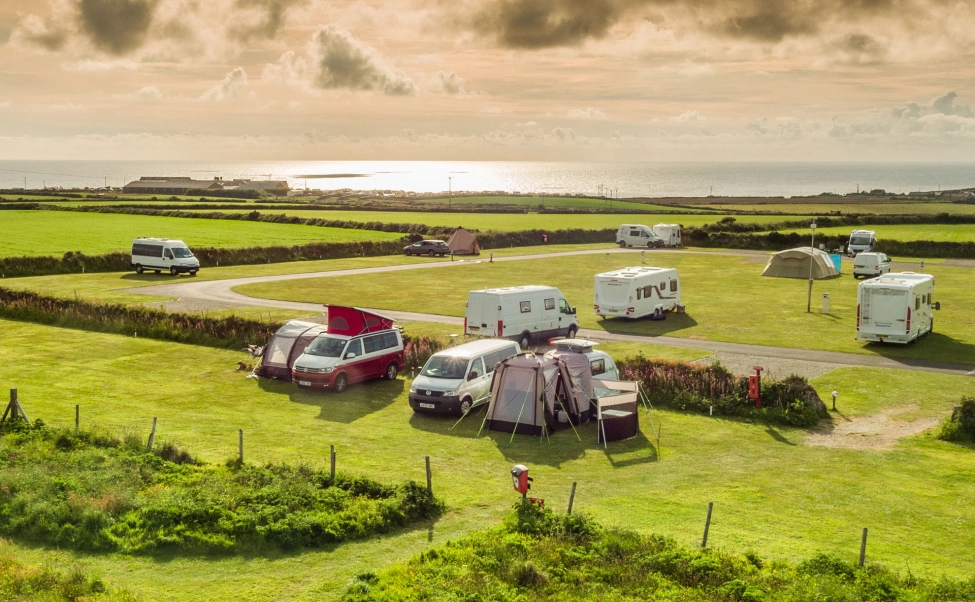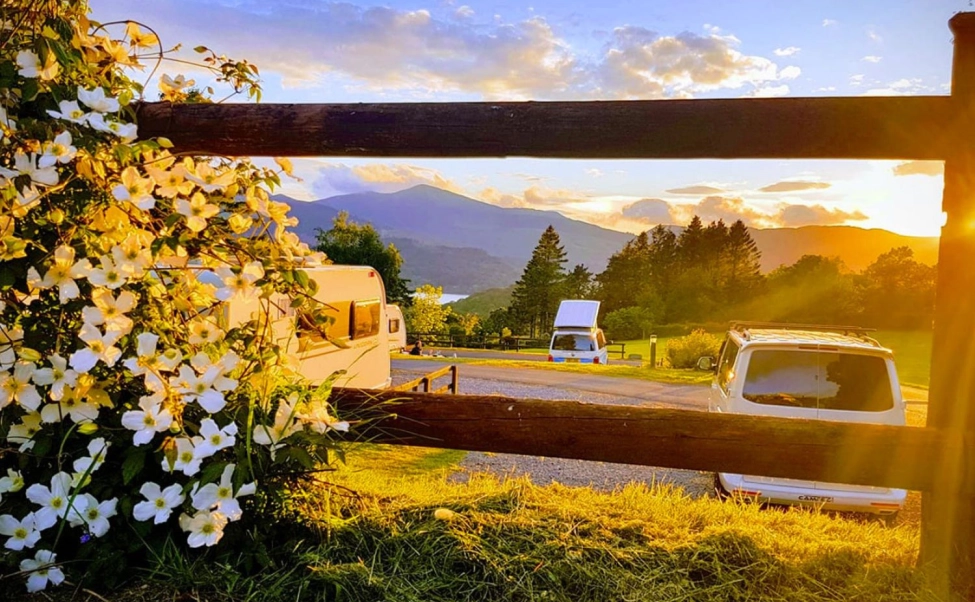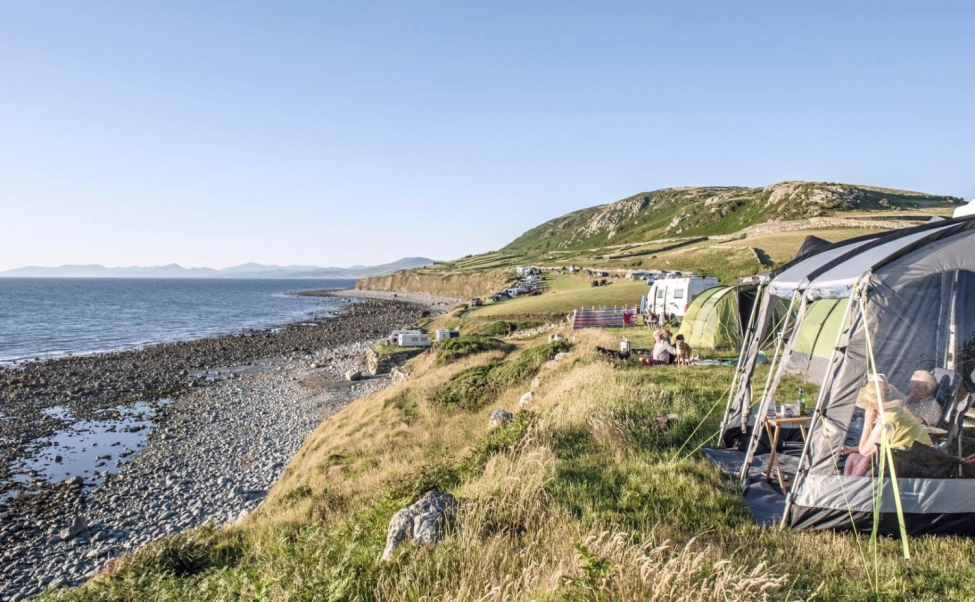- Details
- Written by: Active Traveller Staff
Let's start with the basics - what is a bothy? Put simply, it's a basic shelter - usually an abandoned croft, cottage, or farm building - open for anyone to use and free of charge. The name likely derives from the Scots‑Gaelic or Irish bothan, meaning “hut,” or the Welsh bwthyn, meaning “cottage.”
While they exist in northern England, Wales, and Northern Ireland too, Scottish bothies truly define the experience: not just for their dramatic setting, but for the stories embedded in their walls.
Scotland’s Highlands - sculpted by geology and the scars of history, like the Highland Clearances - left many deserted shelters scattered across the hills. These were a ready foundation for the Mountain Bothies Association (MBA), established in 1965, to step in. Today the MBA maintains around 100 bothies across Great Britain, most in Scotland, managed and serviced by volunteers.
"Bothying has surged in appeal as a retreat from digital fatigue. These sparse, storied shelters offer a soul reset that’s both raw and timeless"
Bothies are about intimacy with landscape and strangers - no electricity, no wifi, sometimes no toilet - but the warmth of peat stoves, shared logbooks and the opportunity to share a 'wee dram' with chance companions more than compensate. If you’re planning to combine a bothy stay with exploring Scotland’s epic trails on foot, our guide to walking holidays in Scotland is a great place to start.
Using a bothy is as easy as turning up, putting a brew on, rolling out your sleeping mat and chucking your sleeping bag on a bunk. But while they're free, they're not a free-for-all in terms of behaviour. As with mountain shelters all over the world, there are a few basic conventions which everyone should take a look at before bedding down in a bothy. The Bothy Code, clearly outlined by the MBA, is your friend: leave it cleaner, use dry kindling, sign in, respect wildlife and stalking seasons.
In 2025, bothying has surged in appeal as a retreat from digital fatigue. These sparse, storied shelters offer a soul reset that’s both raw and timeless. Bothy life isn’t frozen in time, either. New additions like Abyssinia in Glen Kinglas show the network is still growing, while the long-closed Culra – once one of the Highlands’ most popular bothies – is set to be rebuilt after more than a decade of closure. It’s proof that this wild, open-door tradition continues to evolve.
The following bothies, chosen by Geoff Allan, author of The Scottish Bothy Bible represent just a handful of the mountain bothies in use throughout Scotland. If you’re new to bothying, having the right kit can make all the difference – our round-up of the best camping equipment has plenty of ideas to get you started.
Glencoul Bothy: Pocket-sized bothy with spectacular lochside views
Size: Small; two rooms, both with raised platforms, sleeping four
Location: Northern Highlands - LAT/LONG 58.2281, -4.9468, NC 271 305, 11m, LR Map 15, Explorer Map 442
Parking: Kylestrome (NC 218 345) or layby south of Loch na Gainmhich (NC 238 285)
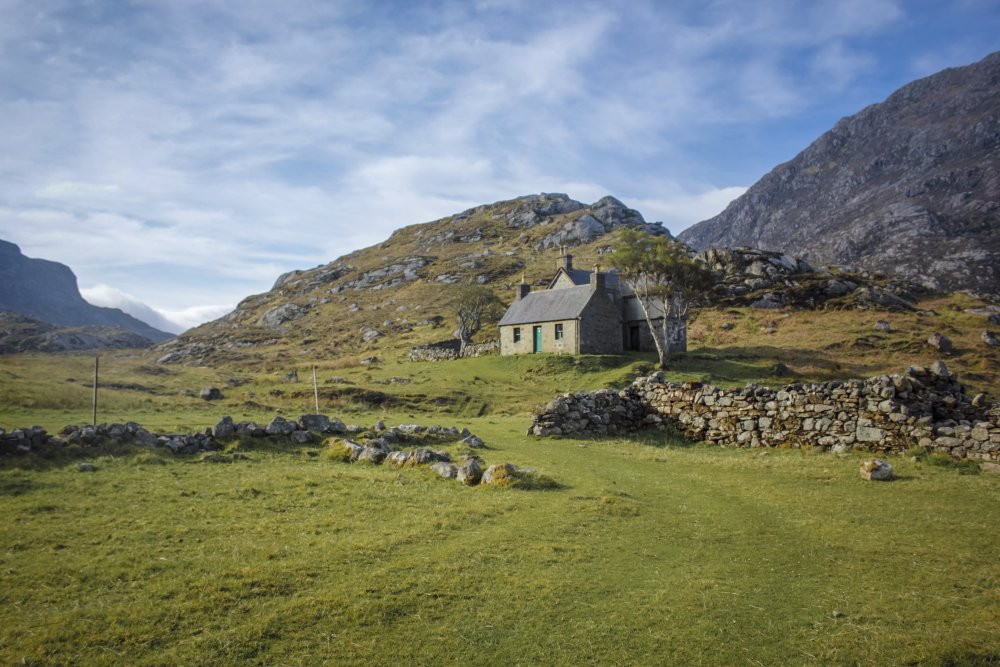
Looking down to Glencoul Bothy from the Stack of Glencoul’s precarious summit cairn, you'll see a long, deep fjord stretching back gracefully towards Unapool and Kylesku. To the West, the peaks of Sàil Gorm and Sàil Gharb on Quinag’s north shoulder catch the eye, and, for a fleeting moment at least, you can happily feel the master (or mistress) of all you survey.
Located at the head of Loch Glencoul, which means 'narrow glen' in Gaelic, the bothy is a small but and ben that abuts the gable end of a larger house in a slightly peculiar fashion – the two buildings seem pinned together like blocks of pre-constructed Lego.
This traditional bothy comprises two rooms accessed by a small hallway. The left hand room is the living area – a snug space containing the original fireplace, a single bed frame, two wooden armchairs, and a table under the northwest-facing window. The right hand room has a hastily-built breeze-block chimney and a cramped cold feel, but was refurbished by the Mountain Bothies Association in recent years.
The MBA advises that fuel is scarce here – driftwood may wash up, but do not cut live wood. The best water source is the Glen Coul river, around 300 yards northeast along the foreshore, as the nearby stream is of questionable quality. Flat camping spots can be found above the stony beach if the bothy is full.
Unless you are planning to arrive by kayak, or take a boat trip from the Kylesku Hotel, there is no direct route to Glencoul. Approaches from West and North both require concentration and good navigation skills, particularly in poor weather conditions.
If visiting between mid-August and late October, check with the estate for stalking activity before setting out.
Key Attractions:
- A visit to the spectacular 200m waterfall Eas a’ Chual Aluinn (waterfall of the beautiful tresses), the highest in the UK, is a must.
- The Corbetts Glas Bheinn (776m) and Beinn Leòid (792m) are both readily accessible from the bothy and make for some great hikes.
- Kylesku Hotel serves excellent fresh sea food, and organises boat trips to the bothy and waterfall.
- It's a recognised stopping off point on the Cape Wrath Trail and part of Scotland’s iconic network of free wilderness shelters maintained by the Mountain Bothies Association.
Kearvaig Bothy: Nestled in its own secluded bay in the far northwest of Scotland
Size: Large; raised platform sleeps two, plus attic
Location: Northern Highlands - LAT/LONG 58.6085, -4.9410, NC 292 727, 9m, LR Map 9
Parking: West side of the Kyle of Durness (NC 369 661) – access via the Cape Wrath minibus from the ferry – or John Muir car park at Blaimore (NC 195 601)
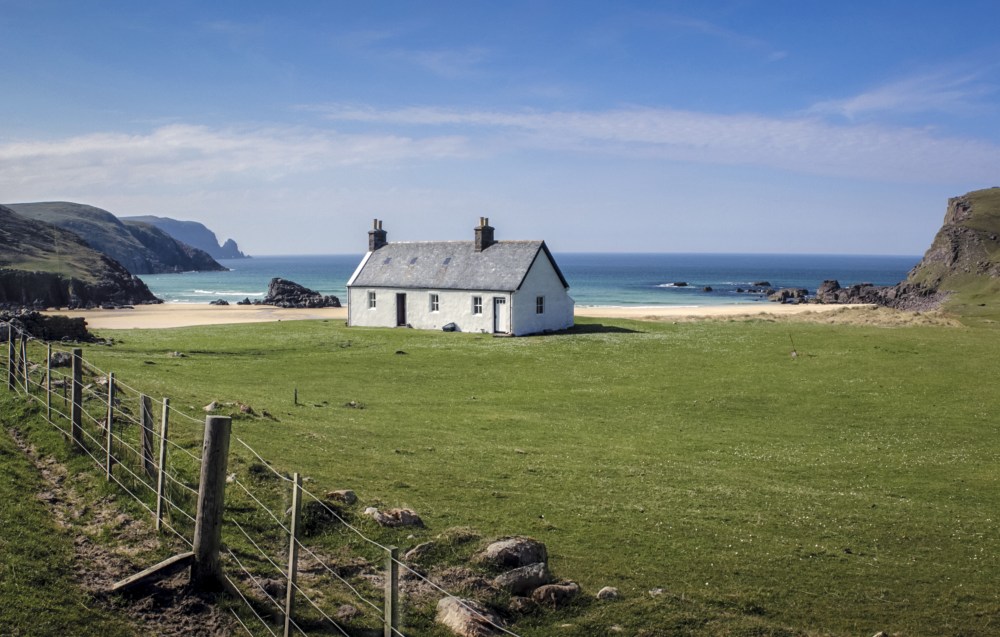
Wandering in the soft light of an early summer morning along the pristine beach at Kearvaig Bay, with gentle rollers lapping at your feet and the first of a spectacular series of sea stacks coming into view, is a truly unforgettable experience.
Galvanising yourself for the steep ascent of the towering cliffs, you reach the dizzying heights and witness guillemots, razorbills, and kittiwakes busy in the rocky crannies, while puffins dart out to retrieve sprats from the foaming waves for their ever-demanding chicks.
The bothy that allows you to see all this and more is a hunting lodge built in 1877. Fifteen metres from the bothy lie the remains of a farmhouse, which now stands in ruin, but still carries the date carved into one of its extended beams beneath the roof. The building was abandoned 40 years ago and had become the worse for wear until an extensive MBA refurbishment in 2009 restored both interior and exterior to one of the most comfortable and photogenic bothies in Scotland.
The building comprises a cottage with an additional one-room apartment attached to its east gable end, both with a single entrance on the south side. The right-hand room was originally the parlour, and is still the main communal room. A granite fireplace, which has a brick insert added later, sits in the east-facing wall, and there is a press at the south end.
Wood panelling and whitewashed walls greet you inside, and a steep staircase in the centre of an internal wall leads up to a two-room attic lit by skylights. There is also access to a small cloakroom behind the stairs.
Entered through a small internal lobby, the one-room apartment is effectively an independent, well-finished, and very snug little bothy in itself, with its own hearth and a sleeping platform running the length of one wall. A small stonewalled outbuilding with a window in its west end has been constructed on the north side of the apartment.
Access to Kearvaig requires taking the passenger ferry across the Kyle of Durness and then the Cape Wrath minibus service, or a 6–7 mile walk in along the estate track. There is no public vehicle access to the Cape Wrath peninsula. This remoteness makes it a treasured stop for Cape Wrath Trail walkers.
Key Attractions:
- Cape Wrath Lighthouse and Ozone Café - dubbed Scotland's most remote café.
- Clò Mòr cliffs, the highest in mainland Britain.
- Sango Bay beach, Smoo Cave and Balnakiel Craft Village.
Maol Bhuidhe Bothy: Very remote mountain bothy with a unique atmosphere
Size: Medium; One downstairs room but plenty of attic space
Location: North West Highlands - LAT/LONG 57.3722, -5.2405, NH 052 360, 261m, LR Map 25, Explorer 429
Parking: Attadale (NG 923 386) OR car park at Camas-luinie (NG 948 283)
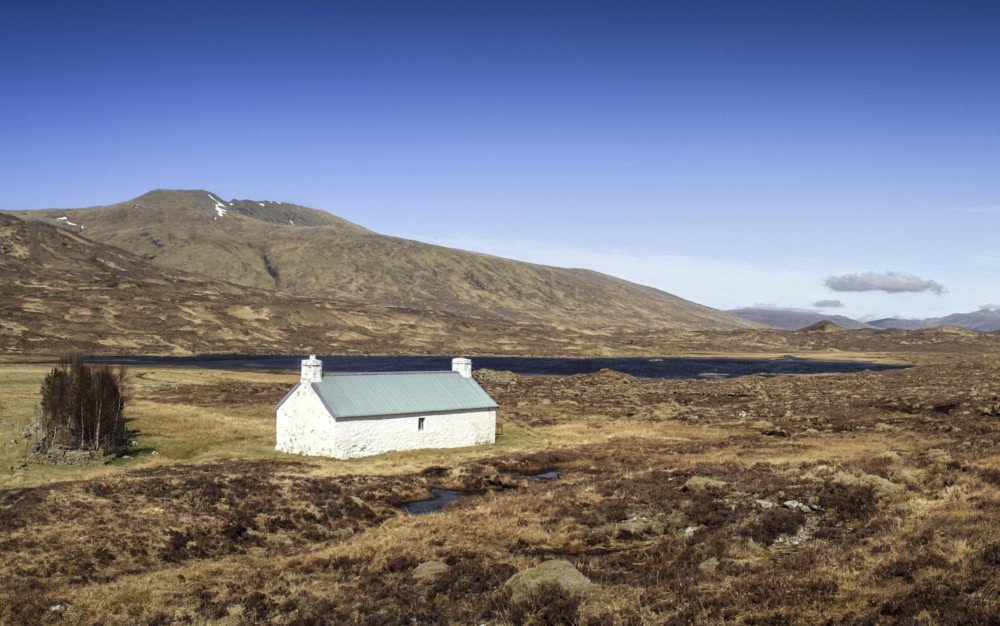
One of the most remote free wilderness shelters in the Scottish Highlands, Maol Bhuidhe embodies the challenge and reward of true bothy culture.
There is a certain mystical quality associated with Maol Bhuidhe, a lonesome homestead which lies in the heart of the remote, roadless territory between Glen Carron and Glen Shiel.
The cheery sight of its bright, whitewashed exterior has brought relief to many a weary traveller, and there are numerous tales in the logbook of dangerous river crossings and arduous tramping over the unforgiving terrain to get here.
A place of pilgrimage for many bothy enthusiasts, the combination of apprehension, satisfaction and invigoration provided by the challenge of heading out here is only complemented by the almost palpable solitude and isolation experienced on your arrival.
The cottage was built during the mid-19th century and its name derives from the Gaelic, bhuidhe meaning ‘yellow’ and maol, ‘bald-headed’ or ‘rounded place’.
After several refits, the bothy you'll find today is a typical 'but and ben' (Scots for a two-roomed cottage) with two main downstairs rooms, and a partitioned attic accessed by a set of stairs. These stairs were carried in over the bealach from Iron Lodge on a small car trailer during the second renovation – a feat that’s become part of Maol Bhuidhe lore. The roof space provides ample sleeping room, lit by two Velux windows. Tucked into the back of the ground floor, the box room’s tiny window stops this space from becoming too claustrophobic.
Downstairs to the right is a rough-and-ready working area. The exposed interior stonework has been whitewashed and the floor retains much of its original cobbling. To the left, an interior door leads into a communal, wood-panelled room, a little cramped owing to a low ceiling but homely nonetheless.
The MBA notes that Maol Bhuidhe is surrounded on three sides by water, with river crossings that can become dangerous or even impassable after heavy rain. Always factor in potential delays, and remember there is no prospect of rescue if you get into difficulties. Even the final stream crossing just before the bothy can be challenging in spate conditions.
Key Attractions:
- Perfect for an expedition up the north-facing coires of the Corbetts Aonach Buidhe (899m) to the south, and Ben Dronaig (797m) to the northwest.
- Munros Lurg Mhor (986m) and Bidein à Choire Sheasgaich, the ‘Cheese Grater’ (945m), lie to the north.
Glenpean Bothy: Amazing views from this remote, yet easily accessible, bothy
Size: Medium; two-person sleeping platform plus attic space
Location: Western Highlands - LAT/LONG 56.9579, -5.3957, NM 936 903, 106m, LR Map 33/40
Parking: Car park at Strathan (NM 987 916) OR Glenfinnan (NM 906 808)
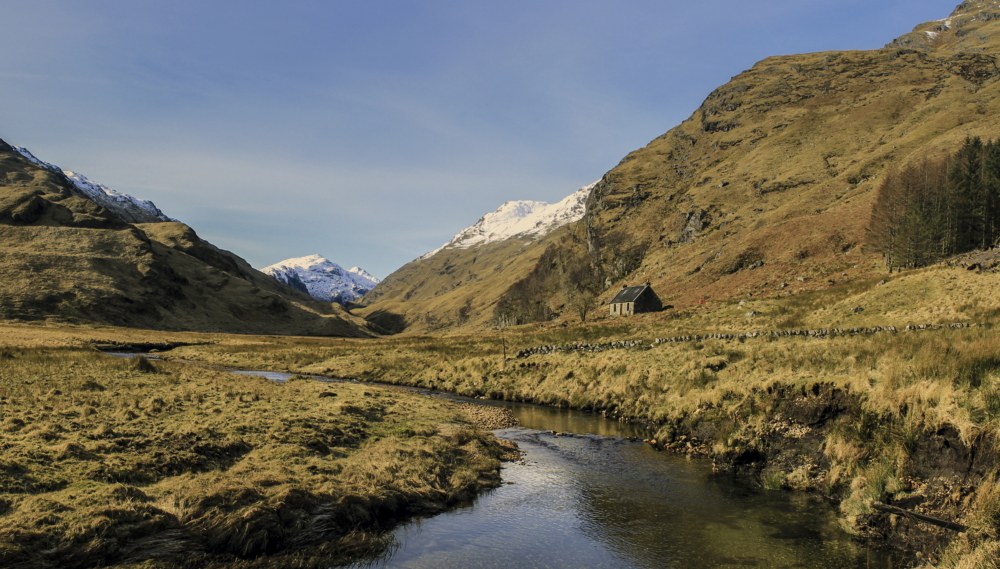
Part of Scotland’s celebrated bothy network, Glenpean offers the rare combination of wild scenery and a relatively straightforward approach – perfect for both first-time bothy visitors and seasoned hillwalkers.
Looking west from the bothy door at Glenpean through the interlocking ridges of the upper valley to the peak of An Stac at the head of Loch Morar, and south across the river to the towering peaks of the Corryhully Horseshoe, it seems remarkable that the view has been so easily earned.
The cottage is only three miles along recently improved forestry access track from the end of the road that winds round Lock Arkaig to Strathan. Note that timber operations can occasionally affect vehicle access – check with Forestry and Land Scotland before setting out. The only catch is that the final 500 yard stretch, where the track abruptly stops and becomes an obstacle course of twisted roots, boggy puddles, and thick grass tussocks.
History weighs deeply in the valley, going back to the time of the Viking settlers, but the bothy dates from about 1870. It was an estate cottage where a shepherd, his family, and a helper lived. Glenpean was one of the first projects undertaken by the MBA, and is now owned by the Bothy Trust, a charity set up after the forestry land on which the building sits was sold by the Balfour family in 2002. The bothy was excluded from the sale to ensure that it would remain an open shelter, allowing it to keep providing free accommodation to weary walkers as before.
Thick wooden panelling splits the ground floor into two sections, with stairs rising steeply into the attic just as you enter. The left hand room is the communal area, with a large stove standing proud of the fireplace at the west gable end. A two-person sleeping platform runs along the wall underneath the window, and there are shelves with various odds and ends.
A table and a couple of chairs complete the scene. The larger right hand room has a fireplace and an ancient iron bunk-bed; it is mainly used for wood sawing and storage. Neither room has any insulation, and the bothy can get pretty cold once the stove has gone out. Upstairs is a large area used for sleeping, and a little wood-panelled room at the east end with a small window.
As with many bothies in the Rough Bounds area, Glenpean is a fantastic base for multi-day adventures – from coastal walks to Loch Morar to challenging high-level routes linking nearby bothies like A’ Chuil. In stalking season (mid-August to late October), check access with the estate before heading in.
Key Attractions:
- Corryhully Horseshoe peaks Sgùrr nan Coirechan (956m) and Sgùrr Thuilm (963m) loom up above the river to the south across from the bothy; Corbett Carn Mór (829m) is to the West.
- Lovely low-level walk up the glen to Lochan Leum an t-Sagairt.
Kinbreack Bothy: A welcome refuge in a wild and rugged glen
Size: Small; just attic space
Location: Western Highlands - LAT/LONG 57.0127, -5.2924, NM 002 961, 370m, LR Map 33
Parking: Car park at Strathan (NM 987 916) OR at hydroelectric dam (NH 069 024)
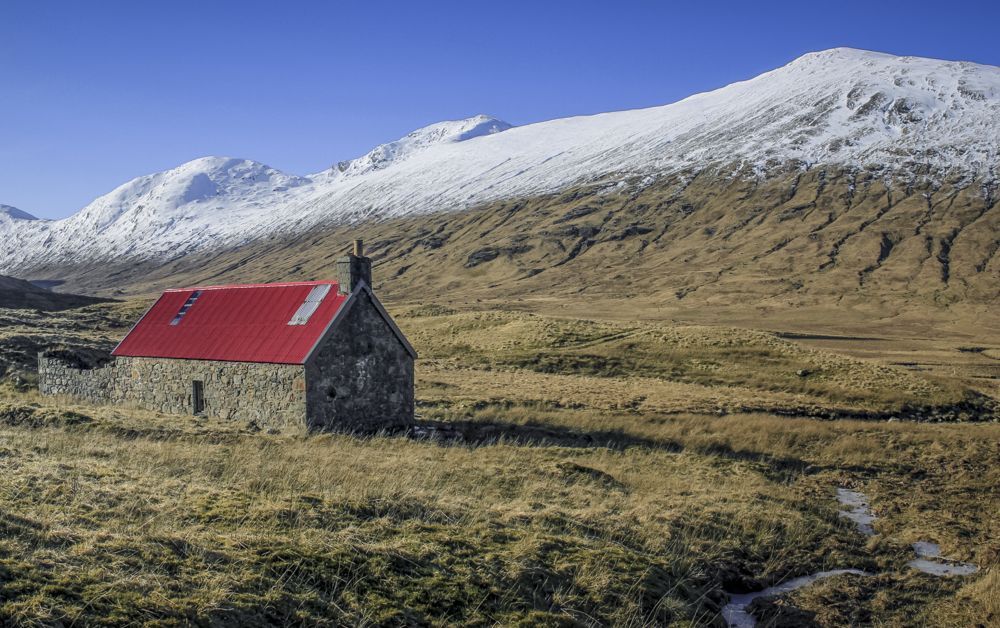
For those seeking a true off-grid Highland experience, Kinbreack offers one of the most secluded free wilderness shelters in the Mountain Bothies Association network.
Pressed into the hillside above a sweeping meander of the River Kingie, the loft at Kinbreack is very much an outlier to its sister shelters in the Rough Bounds. In this surprisingly remote glen just 15 miles Northwest of Fort William, you are immediately struck by the sense of peace and isolation, which is precisely what makes it so appealing.
You are also likely to have the place to yourself because others head to more popular spots. The name derives from the Gaelic Ceann Breac, where ceann means the ‘head’ or ‘end’ (of the glen) and breac is ‘speckled’ and also (as a noun) ‘trout’.
The bothy is the byre to a ruined house that lies close by, once an outpost of a large sheep farm that operated as part of the Loch Eil Estate from the mid-19th century. The last inhabitants, the Camerons, moved to Strathan during World War II, yet sheep continued to graze in Glen Kingie until the 1990s.
The bothy is one of just two MBA shelters where the communal area occupies only the attic space; the ground level is simply an empty shell with a cobbled floor. Access is via the replaced and slightly precarious ladder up to a trap door. The room is slightly cramped but there is a big stone fireplace at one end, and with a fire going, it is very cosy. A worn chaise lounge left in the house functions as a table, flanked by a couple of benches. Natural light filters through four clear perspex roof panels, but the winter months can be a little gloomy when the bothy is shaded by the hill and gets no direct sunlight.
Approaches are on rough, often boggy ground, and river crossings en route can be impassable in spate. In deer-stalking season (mid-August to late October), contact the estate for access details before travelling.
Key Attractions:
- From the bothy door enjoy stunning views of the mountain ridge extending from Corbett Sgùrr an Fhuarain (901m) to one of the most remote Munros, Sgùrr Mòr (1,003m).
- To the Northeast, an excellent stalkers’ path heads over to Gairich (919m).
Ben Alder Cottage: A classic bothy expedition
Size: Medium; three rooms; raised platform sleeps two, bunk bed sleeps four
Location: Central Highlands - LAT/LONG 56.7790, -4.4592, NN 499 680, 373m, LR Map 42
Parking: By sawmill at Bridge of Gaur (NN 506 577) OR by Rannoch Power Station (NN533 582)
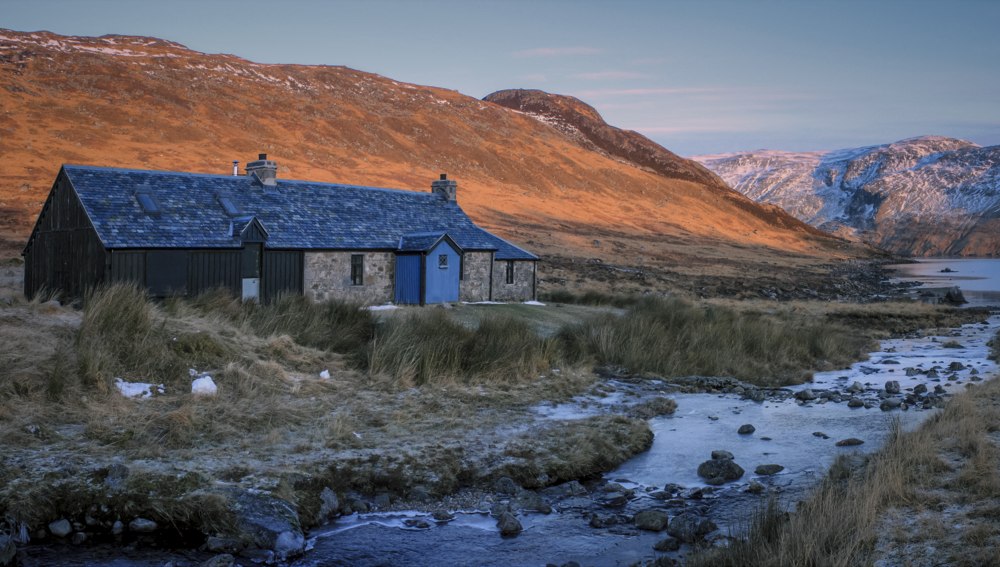
One of the most storied shelters in the Highlands, Ben Alder Cottage blends wild adventure with a dash of ghostly folklore – a true gem in the Mountain Bothies Association’s network of free wilderness shelters.
A trip to remote, atmospheric Ben Alder Cottage (aka McCook’s Cottage) is not for the faint-hearted, but there is a tremendous sense of achievement when you arrive. Tucked beneath the shadow of the Ben Alder massif, above a small bay on the shores of Loch Ericht, the bothy has a rich history and is the source of much anecdote and myth.
Among the hill-walking fraternity, it is one of the most well-known bothies in Scotland, not only because its remoteness is a testing challenge and an opportunity for adventure, but also because it is reputedly haunted. The present Ben Alder Cottage dates back to 1871, but stories persist of an earlier hideout called Cluny’s Cage, where Bonnie Prince Charlie took refuge for a time after the Battle of Culloden. A jumble of boulders above the cottage may well mark the spot.
By the end of the 1920s, rumours about the bothy being haunted were spread by head stalker Finlay MacIntosh and novelist Ian Macpherson in an attempt to frighten away unwelcome visitors. Over the years the anecdotes were embellished, with various accounts of a poltergeist moving furniture and the mysterious heavy tramp of hob-nailed boots outside at night. Even today, ghost stories find their way into the bothy logbook, adding an extra shiver to a winter night by the fire. Don't let that put you off though - this is one of our favourite bothies, or indeed, shelters of any kind, anywhere in Scotland.
The Ben Alder Estate came under new ownership in 2011 and its infrastructure has been greatly improved, including extensive renovation work on the bothy in the past decade, with a new roof, windows, and internal upgrades. The building consists of three rooms accessed by a small porch.
A fair-sized stove has been installed in the left-hand room, along with a sleeping platform and new wood panelling. The right hand room is a little scruffier but still has its own stone fireplace, a table and some chairs, while the small room sandwiched in-between has an integral bunk bed. The west end of the building, newly clad, is not open to visitors and is kept locked.
Approach routes are long and committing – common options include walking in from Dalwhinnie via Loch Ericht’s shore or linking it into a multi-day route from Corrour Station. In winter, snow and ice can make the approach a mountaineering-level undertaking.
Key Attractions:
- Perfect base for an ascent of Ben Alder (1148m) and Beinn Bheòil (1,019m).
- A traverse of Corbetts Beinn a’ Chumhainn (903m), and Sgòr Choinnich (929m) and Sgòr Gaibhre (955m) is another fine round.
- Multi-day possibilities include camping at the old bothy at Culra, or a station-to-station trip from Rannoch to Corrour as described in Classic Walks.
Glas-Allt-Shiel: Hidden quarters in the back of a Royal Estate lodge
Size: Small; attic space sleeping six
Location: Eastern Highlands - LAT/LONG 56.9272, -3.1903, NO 276 824, 400m, LR Map 44
Parking: Loch Muick car park, Spittal of Glenmuick (NO 310 851)
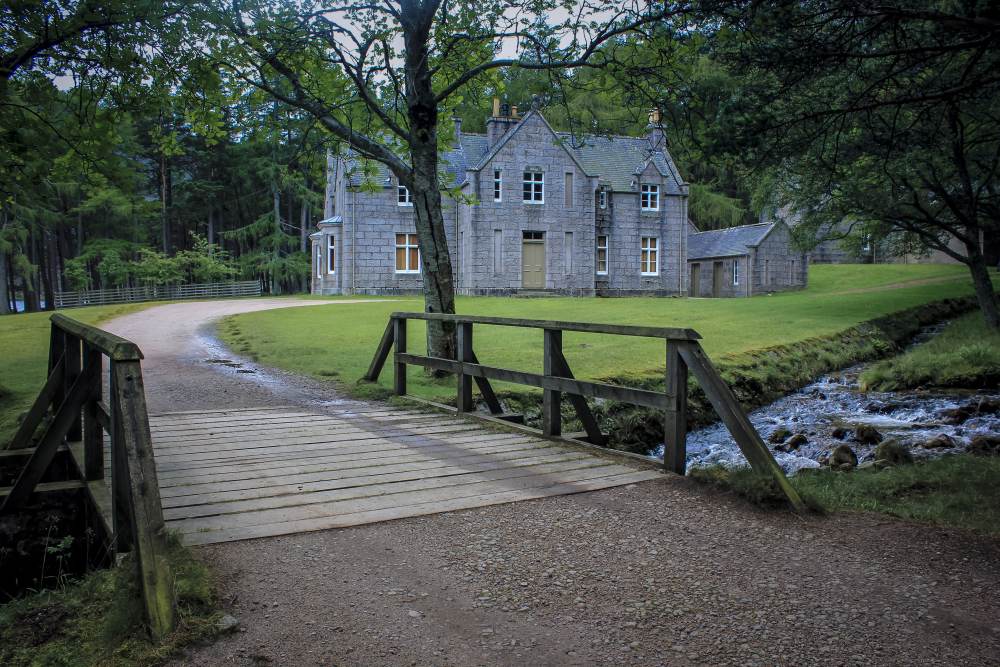
A rare non-MBA bothy, Glas-Allt-Shiel offers a quirky blend of royal history and mountain access – a surprising find on the shores of Loch Muick.
Glas-Allt-Shiel is a quirky wee bothy tucked away in an outbuilding of a large granite house on the Balmoral Estate, which Queen Victoria built in 1860 after the death of Prince Albert. In her later years the Queen spent much time living here as a virtual recluse. Originally a storage room, the bothy went on to become a well-established doss for those either walking or climbing up Lochnagar and Creag an Dubh-loch.
The Dundee University Rucksack Club renovated the shelter as a memorial to Graham Leaver, a fellow member who died in a climbing accident on Askival, one of the summits on the Rùm Cuillin, in 1988. The club has maintained it since 1991, making it a rare example of a bothy not managed and maintained by the Mountain Bothy Association.
As you approach from Spittal of Glenmuick, head to the back of the house, which has a small courtyard, and leading off it, a narrow passageway. The bothy is on the left-hand side and takes a little finding, especially in the dark. The entrance is the furthest in a line of doors and has a brass memorial plaque, put up by the new custodians after the restoration was complete.
Inside the rather large but rather dark room, there is a sturdy table, a scattering of chairs, and a bizarre candelabra hanging from the ceiling. In 2012 the Friends of Bob Scott’s donated a stove – a very welcome addition. A steep wooden ladder leads up to an attic space.
There is also a toilet in another outbuilding behind the bothy, flushed using a bucket filled from the stream. While basic, the shelter’s unusual history and setting on the Balmoral Estate give it a certain curiosity value – particularly for walkers linking Lochnagar with the other Munros of the White Mounth plateau.
Key Attractions:
- Excellent base for an ascent of Lochnagar (1,150m) and there is an impressive waterfall en route to the summit from the bothy.
- For eager baggers there is the incentive to complete the round of the White Mounth (1051m) and Broad Cairn (998m).
Greenskyes Bothy: Out-of-the-way woodland retreat with a simple walk-in
Size: Medium; three rooms, two with raised platforms, sleeping eight
Location: Southern Scotland - LAT/LONG 55.2897, -3.0841, NT 312 000, 268m, LR Map 79
Parking: By the farm at Jamestown (NY 299 969)
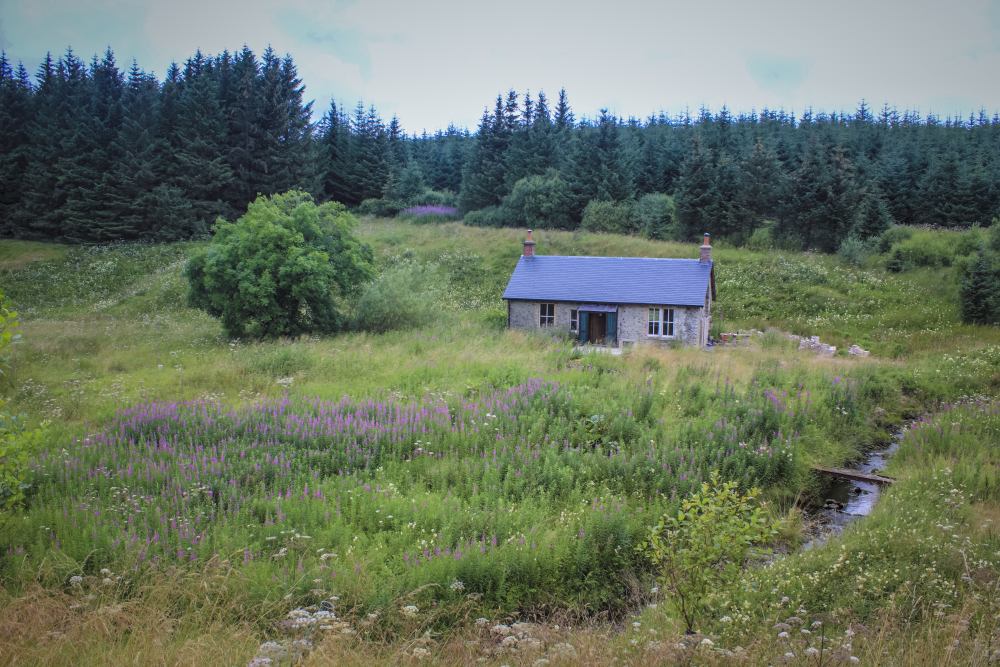
Part of the Mountain Bothies Association’s network, Greensykes offers a change of scene from the typical Highland bothy – a woodland hideaway steeped in Borders history.
Concealed in a small clearing within the extensive Eskmuirdale forest, on the northern side of the picturesque Eskdale Valley, Greensykes is a great place to escape the relentless pace of the modern world for a while, much like its near neighbour the Samye Ling Tibetan monastery located just over the hill.
Like so many remote outposts in the Borders, the bothy was originally a shepherd’s cottage, and much of its history can be found in the local parish records, with the earliest entry dating as far back as 1826. When the MBA began renovating Greensykes in 2011, it took a great deal of effort to get the cottage into a habitable state, including removing two outhouses as well as other add-ons made over the years.
The inside of the bothy is fairly basic and consists of 3 rooms connected by a long corridor. The right hand room is the main communal area, a large space that has an unfinished feel with OSB board, some exposed brickwork and a cement floor. However, there is an excellent stove, wide shelving on the back wall for kit storage and cooking, plus a new single-person raised platform along the back wall.
The left hand room has a more intimate feel, with a working fireplace and raised platforms along two recently lined walls, sleeping four. The central room is a dedicated dormitory, with a sleeping platform for 3 people.
The forest setting makes this one of Scotland’s more unusual bothy experiences – expect the sound of wind through the trees rather than the roar of mountain rivers. The low-level approach means it’s accessible in most weather and is popular for family-friendly bothy trips.
Key Attractions:
- Visit the Telford Cairn built in 2007 to commemorate the 250th anniversary of the great engineer’s birth. It overlooks the car park at the start of the walk in.
- Stop off at Samye Ling Tibetan Buddhist monastery west of the bothy; the tea room is decorated in traditional Tibetan style.
Eagle's Nest Bothy, Lewis: An exhilarating and extraordinary cliff-edge retreat
Size: Very small; single room with small sleeping platform for two
Location: Lewis - LAT/LONG 58.1755, -7.1027, NB 001 317, 40m, LR Map 13
Parking: Layby at Mangurstadh (NB 007 317)
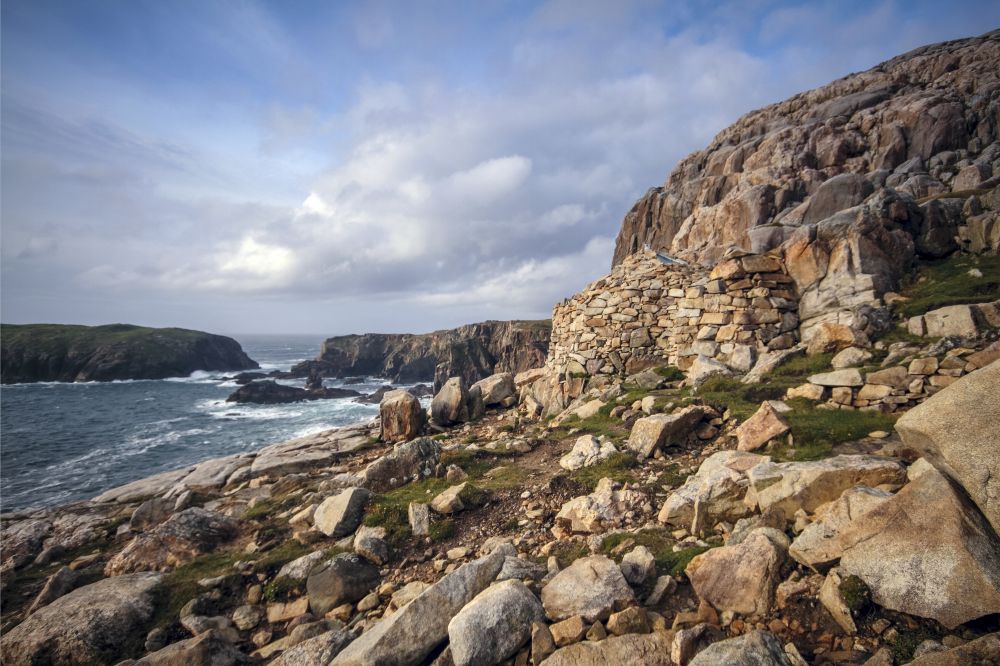
A privately built and maintained bothy, Eagle’s Nest offers a unique chance to spend the night perched on the Atlantic’s edge - a truly wild, west-coast experience.
Everywhere on the Isle of Lewis is stunning, but picking your way down through the shattered pink Lewisian gneiss to the tiny beehive bothy at Mangurstadh, you feel like you have reached the edge of the world. Teetering on the cliff edge, waves crashing over the skerries and zawns below, the vast wild Atlantic stretching out before you - this is one of the most dramatic bothy locations in Scotland, and a firm favourite for photographers.
On a clear day you can see St. Kilda and the Flannan Isles, while in the evening the blink of the lighthouse on Eilean Molach is a comforting friend. The bothy was designed and built by John and Lorna Norgrove more than 30 years ago and at first its construction aroused little interest, but then people began to visit and admire it.
More recently, the bothy became a poignant memorial to the Norgroves’ daughter Linda, an aid worker in Afghanistan who died in 2010 in an attempted rescue by US forces following her kidnap. The Linda Norgrove Foundation, a trust that funds education, health and childcare for women and children affected by the war in Afghanistan, continues her excellent work.
The bothy is a simple structure of wood and stone with two small windows facing west out to sea and two skylights in the roof. From a tiny entrance, you step down into a cosy but fairly cramped space with a raised platform to the left that can sleep two, a separate bench, and a wee fireplace and grate. The stone roof is supported by a central wooden stake, with a wigwam of beams radiating from it.
There is no water source on site, so visitors need to bring their own supply. In high winds the location can feel extremely exposed - it’s worth checking the forecast before making the descent.
Key Attractions:
- Stac Dhòmhnaill Chaim, a fortified promontory 500 yds south of the bothy, was built in the 17th century by local hero and clan chief, Donald Cam Macaulay.
- Visit Tràigh Uig, a fantastic crescent-shaped bay 5 miles north, and make time to stop off at the Callanish / Calanais Stones, a Neolithic stone circle, located just off the A858.
Guirdil Bothy, Rùm: Shoreside croft with stunning views to Canna and the Isle of Skye
Size: Medium; two rooms, plus a four-person sleeping platform in the roof
Location: Rùm - LAT/LONG 57.0254, -6.4183, NM 319014, 21m, LR Map 39
Parking: Only locals with special permits are allowed cars on the Isle of Rum. Visitors generally start from the ferry terminal at Kinloch (NM 411 992), reached via the CalMac ferry from Mallaig.
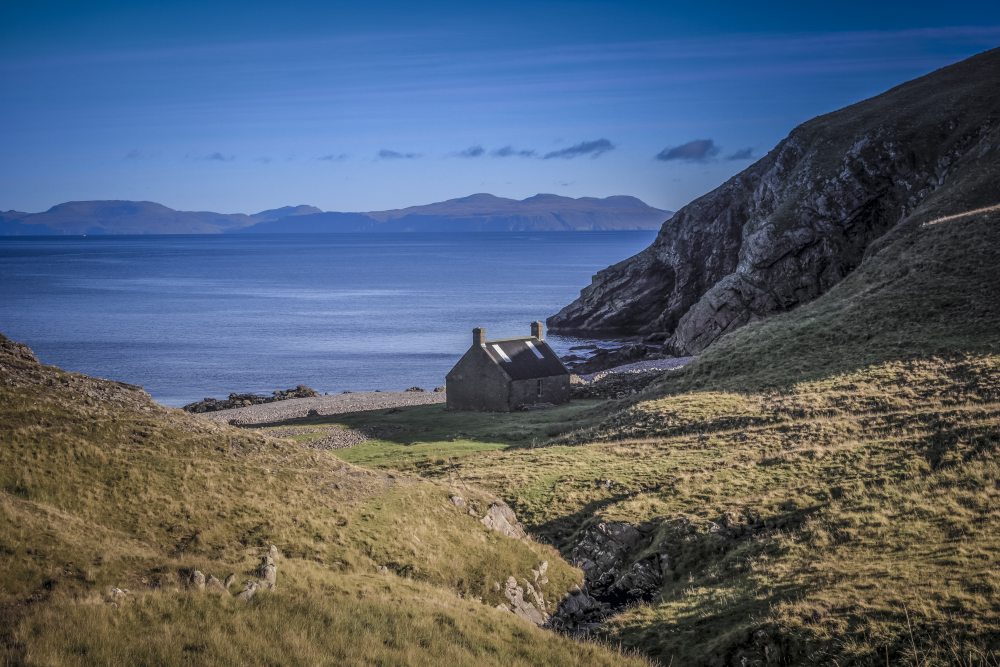
One of the most scenic coastal bothies in the Mountain Bothies Association network, Guirdil blends rich history, outstanding wildlife, and jaw-dropping west coast sunsets.
Watching the sun setting behind Canna from the shingle beach below the bothy at Guirdil is a life-affirming experience. Tucked into a tight crescent bay on the west coast of Rùm, in the shadow of the conical peak of Bloodstone Hill, Guirdil takes its name from the bay’s tumbling burn: in Norse, Giùadal means ‘deep chasm’.
The ruined houses nearby are all that remains of a small crofting community, but people were living on Rùm considerably earlier. A Mesolithic (Middle Stone Age) site that was uncovered near Kinloch is thought to be one of the earliest discovered so far in Scotland, dating back over 7,500 years. Nomadic people visited the bay for the rare bloodstone, a type of green chalcedony, which they mined from the rock. The tiny red flecks of iron gave the stone and the nearby hill their names.
The bothy itself is a former shepherd’s cottage, built in 1848 after the forced exodus of the entire population of crofters to Nova Scotia and the Americas from 1826. The rebuilding of the ruined cottage remains one of the MBA’s most cherished projects. It not only commemorates the work of Tom and Mary Brown, both founding members of the organisation, but also serves as a memorial to Peter Davis, who fell to his death on Askival in 1996.
The interior of Guirdil has been left as an open shell divided by a single wooden partition, while the roof space has a neatly designed sleeping platform for four, accessed by a ladder. The right-hand section is the communal space, the main focus a large well-drawing hearth with an impressive stone mantlepiece and a fine set of antlers above.
There is also plenty of flat ground to camp on closer to the beach. Wander along the coast in either direction to discover a wealth of impressive geological features, from tunnels and caves to natural rock arches, and enjoy the beautiful view from the slopes of Bloodstone Hill.
Flat grassy ground near the beach offers superb camping options if the bothy is full, and the surrounding coastline is ripe for exploration – from caves and natural arches to dramatic basalt cliffs.
Key Attractions:
- A National Nature Reserve and an outstanding location for observing wildlife including golden and white-tailed sea eagles as well as dolphins, porpoises, and the world’s largest colony of shearwaters.
The Scottish Bothy Bible, published by Wild Things Publishing, is the first ever complete guide to Scotland's bothies. The book is written by Geoff Allan, a man who has hiked and biked to every well-known Scottish bothy.
An artist, photographer and surveyor, he is also a maintenance officer for Dibidil – a Mountain Bothy Association’s bothy on the Isle of Rùm – and your perfect guide to exploring Scotland’s wild places.
For more information about these wonderful bothies and to discover loads of the other hidden gem shelters in Scotland, get your copy of The Scottish Bothy Bible.

